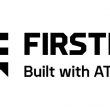In challenging year, working with public safety to move FirstNet forward
It has been a challenging year for the nation, especially for the first responders who are on the front lines of wildfires, hurricanes, and the COVID-19 pandemic. During this historic year, the First Responder Network Authority (FirstNet Authority) remained committed as ever to helping first responders save lives and protect communities.
As part of our mission, we continued to oversee the deployment of FirstNet, the nation’s public-safety broadband network, while working to advance innovation and enhancements to the network based on public safety’s input. In 2020, we worked together with public safety and our network contractor, AT&T, to maximize the potential of FirstNet with key developments in the following areas:
- Network buildout and Band 14 deployment: Three years into the network’s initial five-year buildout, Band 14 deployment remains ahead of schedule. As of October 2020, Band 14 had been launched in 700 markets across the country, according to AT&T. Band 14 is nationwide, high-quality spectrum licensed to the FirstNet Authority for public safety’s network. When Band 14 is fully deployed, it will cover 95% or more of the U.S. population.
- An expanding fleet of deployables: This year saw heavy usage of the fleet of FirstNet deployables—mobile Band 14 cell sites that can be requested to temporarily supplement infrastructure during disasters, boost coverage and capacity during major events, or bring service to hard-to-reach areas. The fleet contains 72 ground-based deployables, such as Cells on Wheels and Satellite Cell on Light Trucks, and 3 flying Cells on Wings (tethered drones). The fleet expanded this year to include a tethered aerostat that helped support response efforts, including following Hurricane Laura. Public-safety agencies continue to report that deployables are an important tool for their communications.
- An expanding ecosystem of approved apps and devices: In 2020, the FirstNet app and device ecosystems hit new milestones, as the marketplace continued to flourish based on public safety needs and demands. The number of apps designed and approved for first responders in the FirstNet App Catalog grew to over 150, providing support for cloud solutions, cybersecurity, public safety communications, and situational awareness. The FirstNet Authority and AT&T teams also worked to approve new devices for public safety’s use on FirstNet, such as ruggedized smartphones and tablets for heavy duty use and high-powered user equipment for increasing transmission power. As of December, 187 FirstNet Ready™ devices were vetted and published on the National Institute of Standards and Technology’s Public Safety Communications Research Division list of user devices approved for the FirstNet network.
- Public safety outreach and advocacy: The FirstNet Authority continued its engagement and collaboration with public-safety stakeholders at the federal, tribal, state, and local levels. Our team worked with jurisdictions and agencies across the nation to educate first responders about the benefits of broadband for public-safety communications. The FirstNet Authority also gathered insights from these engagements to ensure the FirstNet network is meeting public safety’s communications needs now and in the future. In total, the FirstNet Authority held over 1,250 engagements, reaching more than 30,000 public-safety stakeholders in 2020.
- Increased adoption by public safety: As of October 2020, more than 14,000 public-safety agencies have subscribed to FirstNet with over 1.7 million devices connected to the network. The number of connections more than doubled since 2019, demonstrating public safety’s increasing use of, and reliance on, the network. During a year of unprecedented events, FirstNet has proven itself in real-life stress tests, earning the trust of thousands of new public safety agencies.
New data and new investments
In 2020, we released an update to the FirstNet Authority Roadmap, our strategic guide to grow, evolve, and advance FirstNet. Throughout the year, we analyzed technology trends and worked with public safety to capture their operational needs. The updated Roadmap, released in October, incorporated this feedback, along with concrete data gathered through polling and targeted engagements, professional insights from academic and industry experts, and thorough research into the impact of communications technology on public-safety operations.
The Roadmap prioritizes the FirstNet Authority’s programs, activities, and investments to ensure first responders have the communications tools they need. Based on the Roadmap priorities, the FirstNet Authority took steps in 2020 to reinvest resources to advance the FirstNet network in ways that help public safety better perform their missions.
In June, the FirstNet Authority Board approved $218 million for the first set of investments:
- Expanding the fleet of FirstNet deployables to help meet the increasing demand for these assets from public safety.
- Initiating generational upgrades to enable 5G network capabilities, which is expected to be a multi-phase effort beginning with upgrades to the FirstNet network core.
These investments are a direct result of priorities identified in the Roadmap and align with investment principles developed by the FirstNet Authority. The investments will advance the network beyond its contractual baseline to address the evolving communication needs of first responders.
Despite the challenges of 2020, the FirstNet Authority has continued to deliver on our promise to public safety and our nation. Through our partnership with AT&T, we supported more agencies, made our first investments into the network, and held more engagements with first responders to ensure the network meets their evolving needs.
Looking to 2021 and beyond, the FirstNet Authority will continue to provide a network that public safety can depend on every day and in every emergency. They are more than just stakeholders—public safety is the foundation of everything we do at the FirstNet Authority.


















